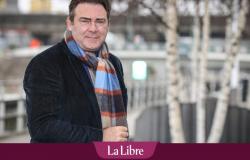(Lima) Peruvian paleontologists presented Wednesday in Lima the rare fossil of a young saltwater crocodile dating back 10 to 12 million years, discovered in the Ocucaje desert, considered the largest cemetery in the world of fossils of the Miocene period.
Posted at 7:08 a.m.
“This is the first time that we have found (in Peru) a juvenile of this species,” Mario Gamarra, paleontologist specializing in vertebrates at the Geological, Mining and Metallurgical Institute of Lima, said at a press conference. .
It is a “fossil of Piscogavialis, a gharial crocodile which existed in Peru approximately 10 to 12 million years ago”, he specified, emphasizing its perfect state of conservation.
PHOTO ERNESTO BENAVIDES, AGENCE FRANCE-PRESSE
These specimens had a skull and jaw morphology different from that of current crocodiles and alligators. “They had elongated snouts and their diet was entirely piscivorous,” Gamarra said.
The fossil, measuring around three meters long, was discovered in late 2023 in the Ocucaje Desert, around 350 km south of Lima and around 40 kilometers from the Pacific Ocean.
This desert is known for having revealed, around thirty years ago, the first signs of the existence of fossils dating from the Miocene period (between 5 and 23 million years ago), notably those of giant sharks and sperm whales reaching up to 20 m long.
World







